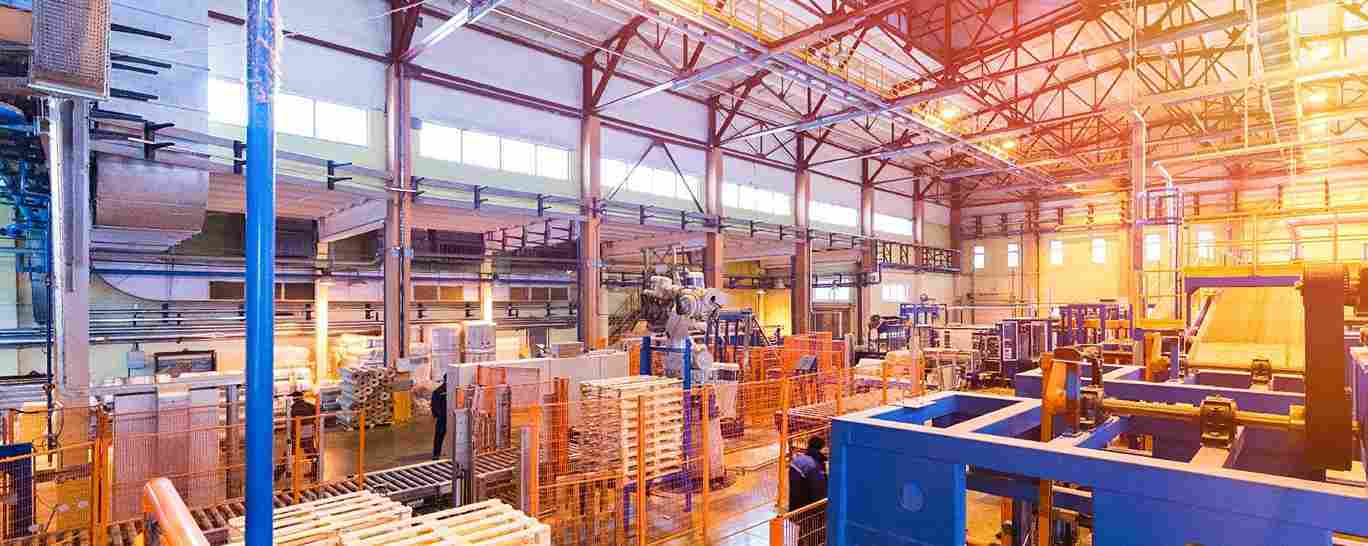
What is Maintenance Management Software?
Maintenance Connection is a leading maintenance management CMMS software that helps businesses maximize operational efficiency.
Solutions
Workplace Management Solutions
Real Estate Management Solutions
Maintenance Management Solutions
Energy Management Solutions
Engineering Document Management Solutions
Asset Management Solutions
Automate campus scheduling for classes, meetings, and exams with our EMS software.
Plan and manage conferences effortlessly with EMS software to impress guests and streamline operations.
Boost workplace flexibility and maximize space use with seamless desk and room booking.
Organize workplace or campus events smoothly, creating memorable experiences.
Optimize workspace, manage allocations efficiently, and reduce costs with our space management solutions.
Deliver projects on time and within budget by improving communication, collaboration, and efficiency with our software.
Streamline lease accounting for ASC 842, IFRS, and GASB compliance.
Manage leases efficiently by tracking key dates, analyzing costs, and ensuring compliance.
Centralize data and analytics for better insights, faster negotiations, and revenue growth.
Centralize facility and asset maintenance, automate work orders, and ensure compliance with our CMMS software.
Extend asset life, reduce downtime, and prevent costly repairs with data-driven monitoring.
Prevent equipment failures and extend asset life by detecting and addressing issues early.
Make sustainable, cost-efficient energy decisions by monitoring and optimizing power consumption.
Remotely monitor and control equipment with real-time data to predict issues, boost efficiency, and reduce downtime.
Easily share and collaborate on documents, creating a single source of truth for engineers and contractors.
Manage and analyze assets across their lifecycle to schedule maintenance, reduce downtime, and extend lifespan.
Improve visibility, automate work orders, and ensure compliance for efficient facility and asset management.
Resources
Browse our full library of resources all in one place, including webinars, whitepapers, podcast episodes, and more.
Support
Looking for access to technical support, best practices, helpful videos, or training tools? You’ve come to the right place.
About Accruent
Get the latest information on Accruent, our solutions, events, and the company at large.

Here's everything you should look for in a comprehensive CMMS work order management system.
Maintenance Connection allows you to optimize your work order management processes, streamline your workflows, make cost-saving business decisions and ultimately achieve your preventive maintenance goals.
Maintenance Connection’s fully customizable dashboards let you view and build your maintenance work order forms, manage work request completion, check key metrics, add relevant emails, attach notes and ultimately stay on top of your maintenance team’s tasks.
Customizable reporting and at-a-glance insight into important metrics can help you track key metrics and pinpoint your preventive maintenance needs. Specifically, you can view key metrics like equipment usage or inventory costs to answer questions and streamline your maintenance operations. You can also look at specific reports like a work order status report or asset history to glean actionable insight.
Get an at-a-glance view of all in-progress maintenance tasks so you can quickly sort, filter and shortcut to relevant work requests and tasks. This centralization can help you speed up daily tasks and gain at-a-glance insight into what’s actively being maintained in your facility.
It is essential that your relevant team members can submit, view and respond to work orders in a timely manner. With Maintenance Connection’s work request manager, you can easily view all key work request details – including order status, type, task, area, date created duration and more. You can also organize and prioritize work orders effectively for maximum efficiency and transparency.
Send instant and automated notifications – via email or text message – about any planned maintenance that needs attention. ,You can also schedule reports by email and export reports in PDF format to increase collaboration, facilitate work order management and ensure that all stakeholders have on-demand, real-time insight into your numbers.
Using Maintenance Connection’s mobile app, your technicians can easily retrieve important documentation, update work orders, check parts availability and respond to requests on-the-go. This can not only reduce paper waste but also help emergency response time, eliminate siloes and decrease rework and costly inefficiencies.
Are there duplicate work requests or multiple versions of the same work order in circulation? If so, it could mean mistakes, confusion and costly rework. Maintenance Connection can flag and integrate these duplicate requests to reduce such mistakes and increase trust in your maintenance management system.
Eliminate permitting inefficiency or confusion by storing your work permits directly in your online records. That way, you will be able to easily access records, track work permit completion, edit work permits and more.
The right CMMS maintenance management system will integrate with your existing systems so you can capture, analyze and use all your data. Use Maintenance Connection’s RESTful API to connect to key applications like your ERP or IoT applications.
Customizable, accessible and easy-to-submit forms can help make sure your technicians quickly access work order requests. It can also ensure that all key details – including area, task type, assignee and related documentation – are easily available via mobile phone, tablet or other web-enabled device.
Explore a customizable demo video playlist.
The ability to effectively collect, analyze, access and apply your asset data can increase efficiency and productivity in your operations. The right CMMS work order management system can facilitate this reporting, allowing you to track equipment usage, create asset profiles and generate custom reports looking at cost of work requests, the tasks most likely to cause production delays and more.
A CMMS solution can help your maintenance department comply with regulatory, industry, geographic and other audits by helping you:
Effective scheduling and preventive maintenance practices can help your organization increase visibility, reduce equipment downtime, prioritize work requests, manage teams, organize assets across devices and more.
You shouldn’t even have to think about the technical side of project management – and with Maintenance Connection’s project management tool, you don’t have to. Create projects, assign work orders, add documentation and track its project all from one centralized source of truth.
Facility safety can be improved with regular preventive maintenance, as this will decrease emergency breakouts and associated risks. Key safety documents and features – including attached standard operating procedures (SOPs), lockout tag out., and comprehensive work order details – also help.
Many Maintenance Connection features – like mobile capabilities, complete work order documentation, automatic notifications and digital signatures – make it easier than ever for technicians to complete their work orders on time.
A free and helpful tool for estimating the financial impact that CMMS software can make within your department.
See how CMMS can help you jumpstart your workplace management.
Today, work order requests are becoming digitized in computerized maintenance management systems or EAM software. This can help ensure that the work order is seen and completed in a timely manner. It can also help users be sure to include all important details.
Standard:
A standard work order is generally issued for non-critical, routine maintenance tasks. For example, setting up a new piece of equipment or hauling away an old asset would fall under the standard work order category.
Preventive maintenance:
Preventive maintenance work orders are forward-thinking work orders that focus on scheduled tasks and repairs. The ultimate goal with preventive work orders is to address maintenance needs before they become concerns, thereby extending asset life, reducing equipment downtime and decreasing expensive repairs over time.
Reactive:
A reactive work order, in the other hand, is generated when there is a breakdown or an emergency with a piece of equipment. The issue needs to be addressed ASAP when a reactive work order is issued.
Corrective maintenance:
A corrective maintenance work order aims to resolve flaws or asset issues that are not emergencies by nature.
Prepare for inspections:
A prepare for inspections work order is a work order that uses predetermined inspection parameters to help ensure that assets – and your facility as a whole – remain compliant with inspections.
Work orders are crucial to the operation of any asset-heavy business. They are used to initiate tasks, explain what needs to be done, establish start and end dates and ultimately keep an asset running. With an effective work order software, organizations can maximize uptime, control labor costs, remain compliant and make incremental improvements to their operations.
A computerized maintenance management system (CMMS) is an enterprise business system that helps companies automate, digitize and optimize their maintenance operations. More specifically, a robust CMMS software will allow your business to effectively budget, prioritize work orders, reduce downtime, increase efficiency and more – all from one centralized, customizable solution.
While both computerized maintenance management systems (CMMS) and enterprise asset management (EAM) systems work to help organizations move from reactive to preventive maintenance strategies, there are key differences between the tools. In general, a CMMS work order software can fit under the EAM system umbrella as CMMS systems tend to focus on asset and facility maintenance during the operational part of an asset’s lifecycle. An EAM, on the other hand, provides a broader range of capabilities that allow organizations to track, manage and analyze their asset performance throughout the entire asset lifecycle. That said, many modern and robust CMMS solutions like Maintenance Connection have EAM functionalities – and the system can be upgraded or downgraded as needed over time.
Corrective maintenance:
This type of maintenance is carried out when an anomaly or flaw is detected. The goal of this maintenance practice is to fix the flaw and maintain uptime. Corrective maintenance tasks may be more cost-effective than preventive maintenance in the short-term, but its short-sighted nature makes it an ineffective long-term strategy.
Preventive maintenance:
Preventive maintenance strategy involves scheduled, forward-thinking maintenance based on key metrics and data points. An effective preventive maintenance strategy can ultimately increase asset life, maximize revenue and decrease equipment downtime.
Condition-based maintenance:
Condition-based maintenance aims to prevent failure through regular asset-check-ups and performance monitoring. In other words, equipment is constantly assessed and maintained, which requires significantly more coordination and manpower than other strategies.
Predictive maintenance:
Predictive maintenance, as the name suggests, aims to preemptively predict asset failures before they arise using data, sensors and IoT technology. Because it relies so intrinsically on data and technology, predictive maintenance comes with a higher up-front cost, and it is not yet feasible for many organizations.
Routine maintenance should be conducted within specific timeframes and on a regular schedule to prevent the common pain points that come with reactive maintenance practices, including asset breakdowns, unplanned downtime, high instance of emergency repairs and equipment failure.
Maintenance Connection is a leading maintenance management CMMS software that helps businesses maximize operational efficiency.
Learn the basics of work orders, the elements of a maintenance work order, and how to optimize the process throughout the work order life cycle.
Preventive maintenance software is a tool that can help maintenance professionals prevent asset breakdown, extend asset life, and maximize technician ...
Subscribe to stay up to date with our latest news, resources and best practices